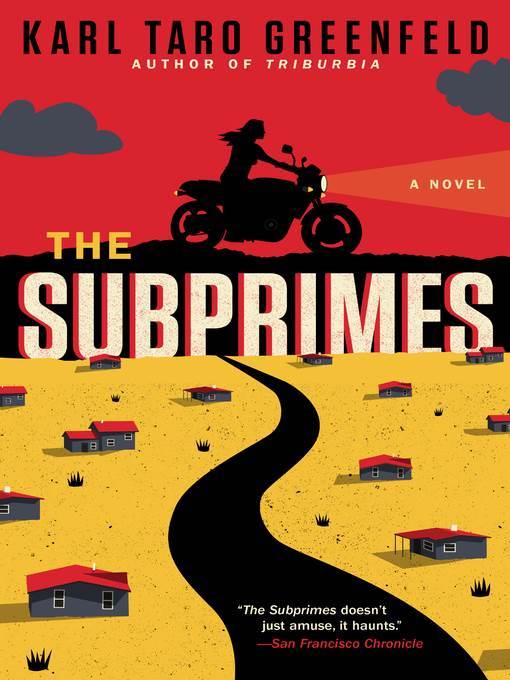
The Subprimes
A Novel
کتاب های مرتبط
- اطلاعات
- نقد و بررسی
- دیدگاه کاربران
نقد و بررسی

March 16, 2015
When even a seemingly abstruse economic work like Thomas Piketty’s Capital in the Twenty-First Century becomes a runaway bestseller, it’s clear inequality is in the zeitgeist. Thus a work of fiction that tackles “this climactic age of American capitalism” head-on and takes its social and economic ills to satirical excess seems the perfect book of the moment—but this novel isn’t it. In Greenfeld’s (Triburbia) near future there are the few haves—the sort who fly the HeliJitney to the Hamptons and find solace in a right-wing preacher’s extreme gospel of wealth (“God wants us to have a big life, a gigantic life, a ten-thousand-square-foot-mansion-and-a-rib-eye-every-night kind of life”)—and the have-nots, a vast mass of “subprimes,” itinerant and dodging debtors’ prison for their low credit scores, who live out of cars and in tent cities built on once thriving middle-class communities. Sargam is a mysterious messiah-like figure who rides in on a motorcycle and establishes a thriving socialist community of subprimes, settled inconveniently atop drillable shale oil. During the inevitable showdown between “people helping people” and greedy corporate interests supported by a privatized police force, several flat characters have predictable epiphanies: the alienated journalist finds belonging and hope, and kids—weighed down by standardized scores and math homework—learn that playing outside is fun (“I have so rarely seen my children this free”). Though Greenfeld’s dystopian future does sound all too real, it’s true tragedy, as a novel, is that it is neither very funny nor entertaining. The people deserve more.

March 1, 2015
In a near future where the poor have been utterly undermined by the rich, a renegade emerges to champion the inherent good in people. After mocking urban gentrification in his debut novel (Triburbia, 2012), here Greenfeld employs the ethos of the Occupy movement in imagining how the worst tendencies of conservative power and economic greed might wreak havoc on a nation. The novel opens on a squatter's camp in California, where "Subprimes" with ruined credit ratings wander fruitlessly looking for food and shelter. We meet Sargam, a motorcycle-riding orphan whose kindness is blinding. Blessed by one young family for giving them a little money, she says, "Not God. It's just people. People helping people. That's all we got." Greenfeld pulls back the curtain on his slow apocalypse to reveal an America where roads, education, and the justice system have been privatized, with public services and schools left to crumble. In an eerie sidebar, the poisoned environment is driving whales to beach themselves in mass numbers. Greenfeld alternates his third-person narrative with a first-person perspective on current events from Richie Schwab, one of LA's last journalists, who copes by smoking potent weed and working his beat. Schwab falls in with Gemma Mack, the beleaguered wife of Arthur Mack, a hedge fund manager who famously swindled billions from his clients. Arthur is now in cahoots with "Pastor Roger," the leader of a megachurch who empowers industrialists and oil barons in the name of God-seriously, the villains here make the most single-minded Objectivists look like saints by comparison. Sargam and her tribe make their way to rural Nevada, where the Subprimes occupy a housing development and begin building a fair, equitable, and sustainable community dubbed Valence. Naturally, the bad guys learn there's fracking energy to be had beneath Valence, and the fight is on. Ain't no justice, just us. Greenfeld has a tendency to lean toward parody in his satiric style, but here he employs enough authenticity to terrify, enough black humor to disarm the story's inherent pessimism, and a surprising admiration for faith in its myriad forms.

























دیدگاه کاربران